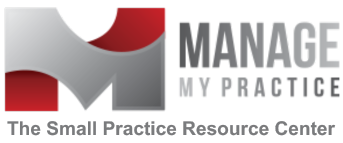
But why haven’t we seen much of Lean in physician practices? I think the reasons are simple:
- Staff in medical practices are already running very slim, and the labor of additional projects may be difficult to take on
- Larger businesses such as hospitals mean higher potential for returns – physician offices may not see significant bottom line changes from Lean reduction of waste compared to revenues from new procedures or partners
- Physicians are not early adopters of management theories and may find it difficult to see the ROI in Lean
Although Cindy Jimmerson says that every hospital she has worked with has more than earned back the program costs through successful Lean projects, it may be a hard sell to most private physicians who see their incomes shrinking year by year.
An excellent article in the Healthcare Quarterly, 12(3) 2009: 32-41 by Longwoods Publishing gives a concise yet meaningful discussion of Lean and describes Lean projects and outcomes in several hospitals. Healthcare Quarterly focuses on “best practices, policy and innovations in the administration of Canadian healthcare” and is edited by Dr. Peggy Leatt, University of North Carolina, Chapel Hill.
Even if your practice won’t be hiring a Lean consultant in the forseeable future, understanding more about Lean has the potential for enhancing your efforts at improving processes in your practice, or maybe even encouraging you to pursue Lean leadership training.
What follows is an except from the article “Leading Lean: A Canadian Healthcare Leader’s Guide” by Benjamin A. Fine, Brian Golden, Rosemary Hannam and Dante Morrasome, which gives some basic Lean terminology:
Lean Terminology: What Does It All Mean?
Lean: A term coined by those who compared Toyota’s methods to those of other manufacturers: “Lean is the antidote to waste … It provides a way to specify value, line-up value-creating actions in the best sequence, conduct these activities without interruption whenever someone requests them, and perform more and more effectively” (Womack et al. 1990; Womack and Jones 2003).
Value-added work: Work that adds value from the perspective of the client or customer; it is the kind of activity or service for which end users are willing to pay. In healthcare this could be the taking of blood for a medically necessary test or patient time spent with an examining physician.
Waste or muda: Activities of overproduction, waiting, transportation, processing, inventory, movement and defective products. Type 1 muda represents activities that cannot be avoided immediately given current policies, assets and technologies. If a physician cannot eliminate the need to fill out a drug allergies form because of an existing policy, that muda is categorized as type 1. In contrast, type 2 muda is clearly wasteful activity; it is the prime target for immediate elimination. An example of type 2 muda is the time that staff spend looking for equipment that isn’t stored or categorized in a sensible way. This wasted time can be immediately removed by re-organizing storage areas – for example, moving blood pressure cuffs to one standardized location so they can be easily found.
Value stream map: Visual presentation of activities required to bring a service or product from customer order to delivery. Value-added steps and muda are most easily identified on a value stream map. The mapping starts with defining what the customer demands (in the top right corner) and then captures all the steps required to fulfillment. The “current state” value stream map represents the steps as they exist today. The “future state” value stream map is a visual representation of an idealized state. Improvement activities (like kaizen events below) undertaken by front-line staff move the process toward the future state.
Gemba: In Japanese, gemba means “actual place.” In the Lean context, it refers to the place where value is actually created: the shop floor in manufacturing, or a clinic (e.g., emergency department, outpatient dialysis unit, or operating room) in the healthcare setting. The concept of gemba is important because it emphasizes the Lean principle that value – what customers actually want – is created on the front lines, not in boardrooms. The value stream mapping exercise forces workers to “walk the gemba” to see value and the process that creates it.
Kaizen event or rapid improvement event (RIE): Kaizen means “improvement” in Japanese, and kaizen events are focused on implementing improvements to the process of meeting customer demands. In healthcare, these week-long events provide the opportunity for front-line workers from different disciplines to work together to rapidly plan, implement, measure and adjust improvements.
Kamikaze kaizen: Kaizen activities that improve an isolated segment of a process but negatively affect the entire process are referred to as “kamikaze kaizens.”
If any readers out there have experienced Lean in your hospital or medical practice, please share by leaving a comment.

